Taoist clothing, which refers to the costume worn by Taoists, belongs to the Han traditional dress system. It is also known as "Fa Fu (法服)", "Taoist uniform", "Taoist dress", etc.
The Taoist clothing is the traditional costume of the Chinese nation, and the social costume has changed with the development of the times, but within the Taoist religion is largely unchanged. Daoism attaches great importance to its own traditions and has always been steadfast in adhering to all the beliefs and systems that have been formed. Its dress is just that.
Early Taoist clothing, which was not strictly regulated, began to form systems after Lu Xiujing (陆修静) in the Southern Dynasty. Taoism is quite cautious about its dress, both in the Quanzhen (全真派) and the Zhengyi (正一派) Taoism. By the end of the North-South Dynasty, a complete dress system was basically formed. That is to say, according to the years of Taoist initiation and the depth of Taoism, the Taoist is divided into several levels, and specific provisions are made for each level of Taoist clothing, crown, and boots, the fabrics to be used, the colors to be taken, the style to be taken, etc. Each rank of Taoist must dress in this manner and must not be confused.
The Taoist clothing can be divided into five parts: the Taoist hat, the Taoist crown, the Taoist robe, shoes, and the ornament.
The Taoist hat
The Taoist hat refers to the hat worn by Taoists. The nine types of Taoist hats that are popular nowadays are; Hunyuan hat, Zhuangzi Jin, Shun Yeung towel, Haoran Jin, Xiaoyao Jin, Heye Jin, Sun hat, Yizi Jin, Baojin, etc.
Hunyuan hat (混元巾): It can also be called a "GuanJin (冠巾)". Round, hard-shelled, with holes in the top of the hat to reveal the hair bun. The upper back is raised slightly to indicate transcendence. The Hunyuan hat is the most formal headscarf in Taoism.
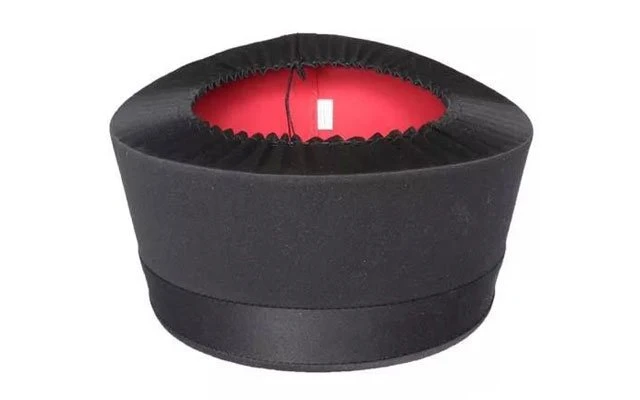
Hunyuan hat
Zhuangzi Jin (庄子巾): The cap has a rounded base and a sloping, flat top. The top of the hat is raised backward and upwards to indicate transcendence. The front of the hat is decorated with a "Mao Zheng (帽正)" in the middle (see the introduction below). It is often worn in autumn and winter weather, Taoists who do not grow hair or old hair loss like to wear this scarf.
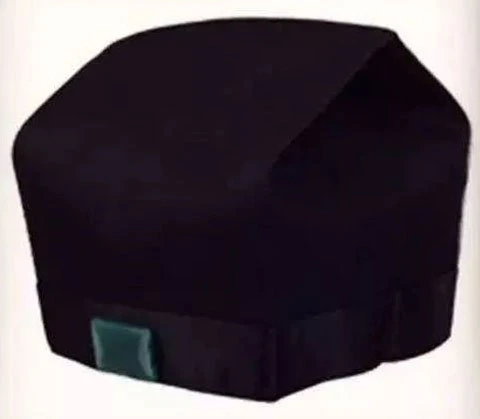
Zhuangzi Jin
Shun Yeung Jin (纯阳巾), also called Jiuliang Jin (九梁巾). The cap has a rounded base and a sloping, flat top. The top of the hat is raised backward to indicate transcendence. There are nine slits in the front of the hat that grows like the ridge of a roof. In Taoism, nine is the largest number and represents the heavens above. Therefore, wearing Jiuliang Jin represents the Taoist idea of the unity of heaven and man. The front of the hat is studded with a Mao Zheng. Nowadays, Zhengyi Taoism Taoist monks mostly wear this hat.
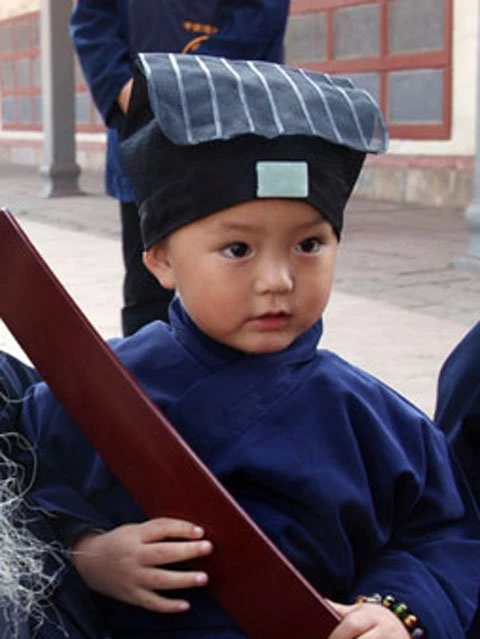
Shun Yeung Jin
Haoran Jin (浩然巾): It is made of cotton to keep out the wind and cold.
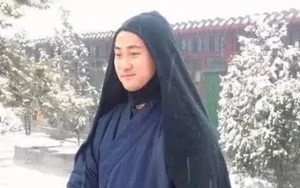
Haoran Jin
Xiaoyao Jin (逍遥巾): A square (or round) headscarf, wrapped in a hair bun and tied with two long sword headbands. The young Taoist priest like wears Xiaoyao Jin, in between actions, looks dashing.
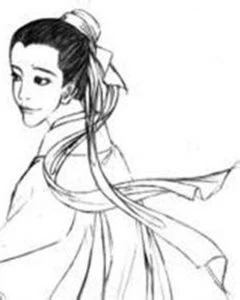
Xiaoyao Jin
Heye Jin (荷叶巾, lotus leaf headscarf): The shape is similar to the Zhuangzi Jin, and has ruffles like a lotus leaf, hence the name.
Sun hat: straw hat. Taoist priests who work under the hot sun in the summer may wear this hat. Some Taoist monks, in order to differentiate themselves from society, hollowed out the top of their hats to reveal their hair, or painted the brim of their hats with Taoist patterns such as Bagua and Taiji, or wrote the name of the Taoist temple where they lived.
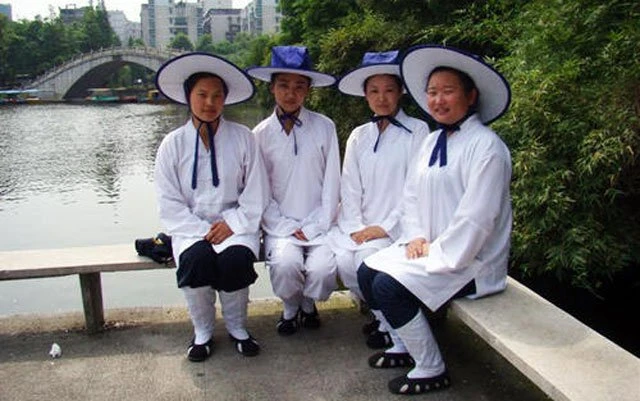
Sun hat
Yizi Jin (一字巾): a band for hair, with a piece of Mao Zheng at each end, two pieces of Mao Zheng overlapping together, can be worn on the head. It's the easiest of all the Taoist hat.
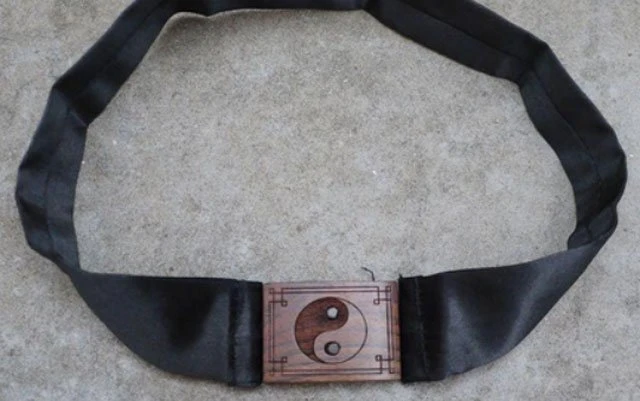
Yizi Jin
Bao Jin (包巾): is a square piece of fabric with straps around the corners that can be wrap on the hair.
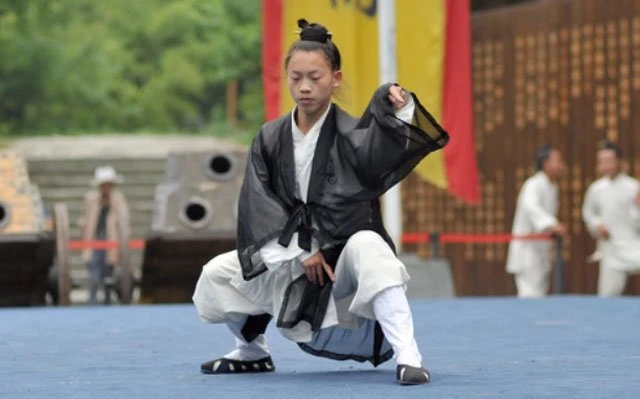
Bao Jin
The Taoist crown
The Taoist crown refers to the crown worn by Taoist priests. It is mostly made of wood, and in recent times it is also made of plastic. According to its different uses, it can be divided into five kinds, such as the Huang crown, Wuyue crown, Star crown, Lotus Crown, Wulao Crown.
Huang Crown (黄冠): crescent-shaped, with two opposite holes along the lower edge, through a wooden hairpin, which can put on top of the hair.
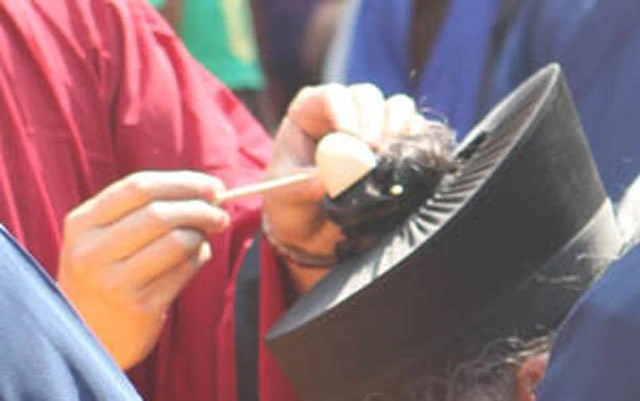
Huang crown
Lotus Crown (莲花冠): It is called the Lotus Crown because it looks like a lotus flower in full bloom. It became popular in the Tang Dynasty and was followed by the Song Dynasty. Made of gold and jade and adorned with jewels. The highest rank in the Taoist crown cap.
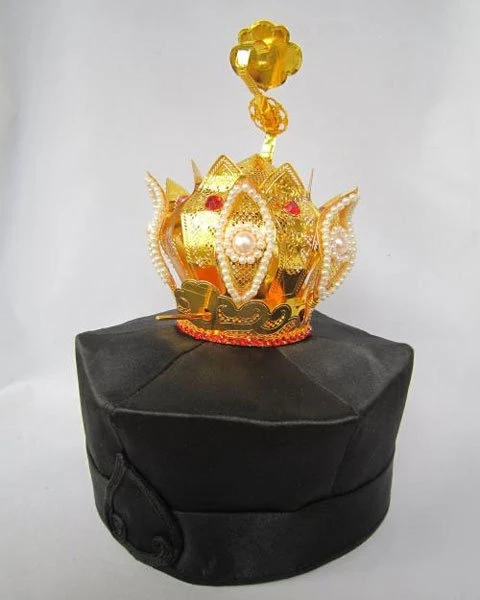
Lotus Crown
Wulao Crown (五老冠): This is the crown that is worn around the head. Topless, lotus petal-shaped, with two long bands hanging from each side.
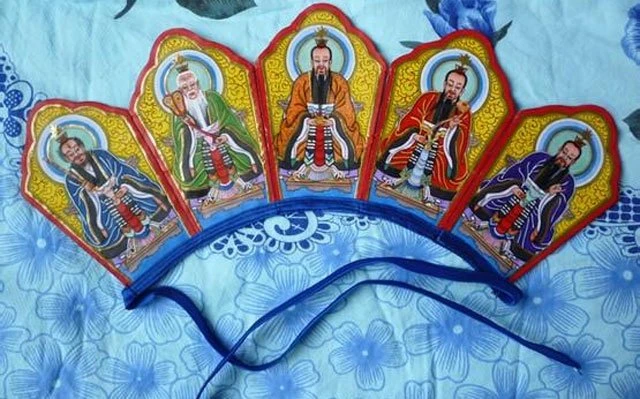
Wulao Crown
The Taoist robe
Referring to the robe that the Daoists wear on the outside. It can be divided into six kinds of clothes: Da Gua, De Luo, Jieyi, Fayi, and Nayi.
Da Gua (大褂): With a large lapel, length to the leg wrist, and sleeves 18 inches wide, it is the most common type of Taoist robe that Taoists wear daily. Nowadays, they are mostly narrow-sleeved for daily tasks. All blue.

Da Gua
De Luo (得罗): blue, large lapel, length to the leg wrist, with sleeves over 23 inches wide. This is a dress that can be worn by an official priest to participate in religious activities.
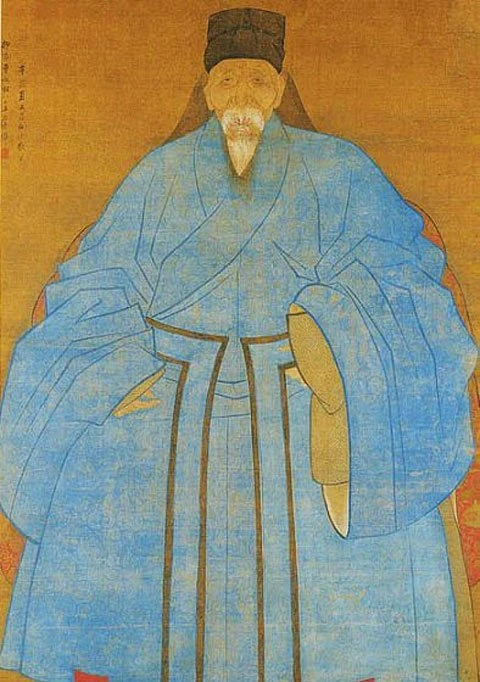
De Luo
Jieyi (戒衣): yellow, large lapel, length to the leg wrist, with sleeves over 31 inches wide.
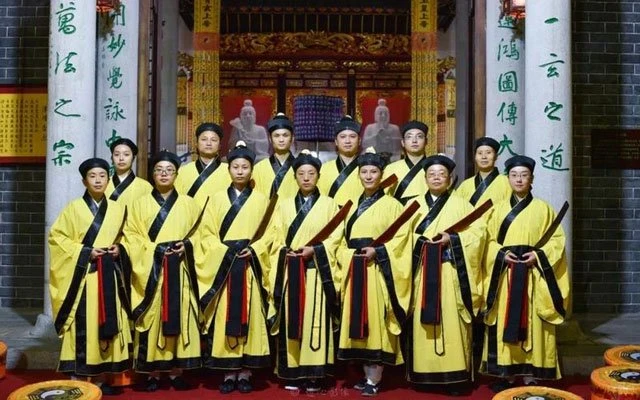
Jieyi
Fayi (法衣): Duijin, length to the calf, with various Taoist auspicious designs embroidered with gold silk and silver thread. When the abbot wears this garment during the ceremonial ceremony, it is purple.
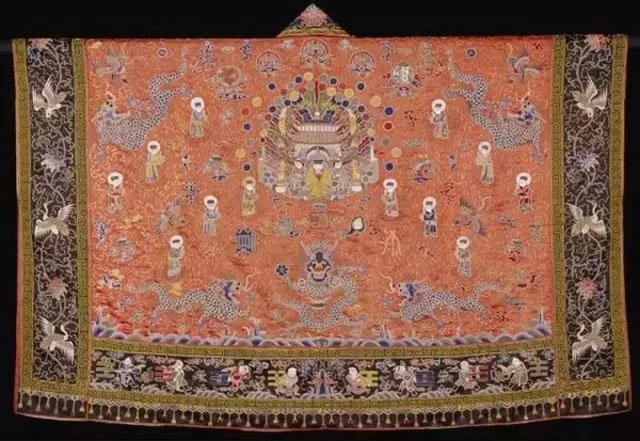
Fayi
Huayi (花衣): belong to Fayi, Duijin, also have a variety of embroidered patterns on them, as well as red or yellow ones without patterns.
Nayi (衲衣): large lapel, length to the calf, the multi-layered coarse fabric is stitched for a clumsy and heavy look. It used to be worn by Taoists when they meditated in the field to protect against wind and cold. Most Taoists are no longer used today.
All of the above Taoist clothing are taken to be fat and loose, in order to symbolize the separation with the mundane.
The Taoist shoes
The footwear worn by the Daoists came in several common styles:
Roundhead shoes: black, deep muzzle, for daily use by ordinary Taoist priests.
Double-face shoes: black, round mouth, with two raised beams in the middle of the face, dividing the face in two, hence the name. Some also adorn the upper part of the shoe with a cloud head pattern. This is a more formal kind of Taoist shoe.
Shifang shoes (十方鞋): round mouth, black and white bar pattern on upper. There is another type of shoe that has holes in the top of the upper for summer use.

Shifang shoes
Nowadays, Taoist priests also wear cloth shoes or sneakers that are sold in society.
Ornament
Ornament refers to the various ornamental items worn by Taoists.
Hairpin: Used by Taoist priests to hold their hair in a bun. It is generally made of yellow poplar wood or jade, metal. Bar-shaped, slightly curved, also straight, some with Taiji, Bagua, or gourd shapes carved into the back end.
Mao Zheng (帽正): mostly made of jade. Square, set in the front center of the hat. In addition to being a decoration, there is also the function of checking that the hat is worn correctly.
Hui Jian (慧剑): is an ornament on the Taoist robe. Two long sword-shaped straps sewn into the buttons of the robe.
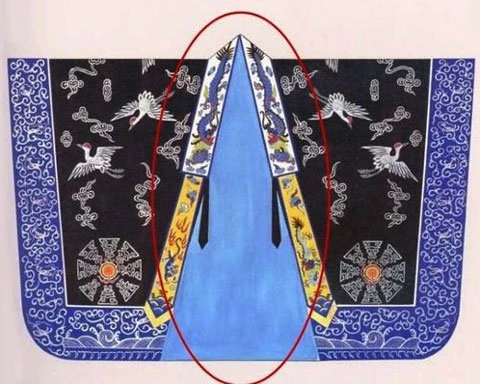
Hui Jian
Sword: Nowadays, it is not common for Taoist swordsmen to wear swords, usually hanging in the living room to ward off evil and remove demons.
Fuchen (拂尘): It is a wooden or metal shank with a Zongsi (the fiber of the palm tree leaf sheath) or horsetail attached to the end. It can be used to dust or repel mosquitoes and flies. The Taoist priest holds a dust whisk, which is meant to sweep away the dirt from the mind and calm the body.
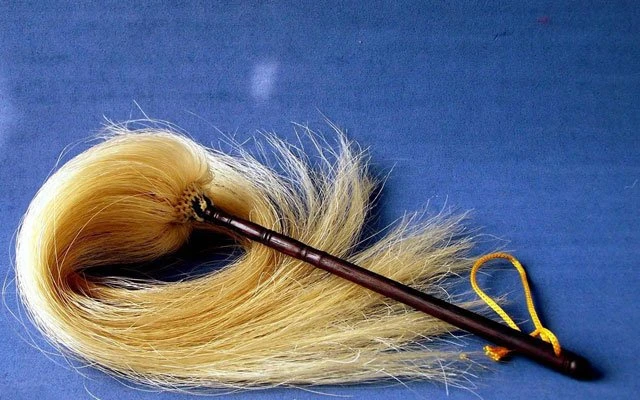
Fuchen
Yin-Yang Ring (阴阳环), also known as the Qian-Kun Ring, is a Taoist dharma weapon and is one of the important Taoist religious cultivation items. The two rings are connected together and can be held in the hand and turned back and forth, representing the meaning of "the cycle of yin and yang, the cycle of weeks and the beginning". Older priests are particularly fond of playing with this, thinking that it is for moving their wrists.
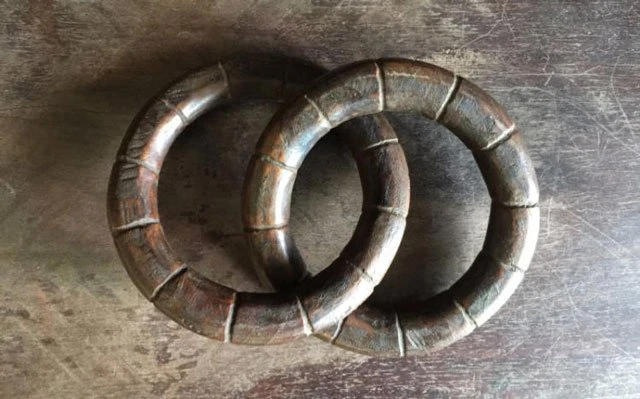
Yin-Yang Ring
The significance of Taoist clothing
Taoist clothing is based on the traditional Han costume, combined with Taoist ideology and theory of innovation and transformation, the formation of a very Taoist cultural connotation of the religious costume, and this religious costume in the development of Taoism, although some changes, but overall is still basically inherited the ancient system.
The Taoist costume not only imposed certain constraints on the Taoist priests themselves but also made a greater distinction between the sacred and the secular. The common people see Taoist clothing, which in a way can alert the world and educate the people.
Read More:
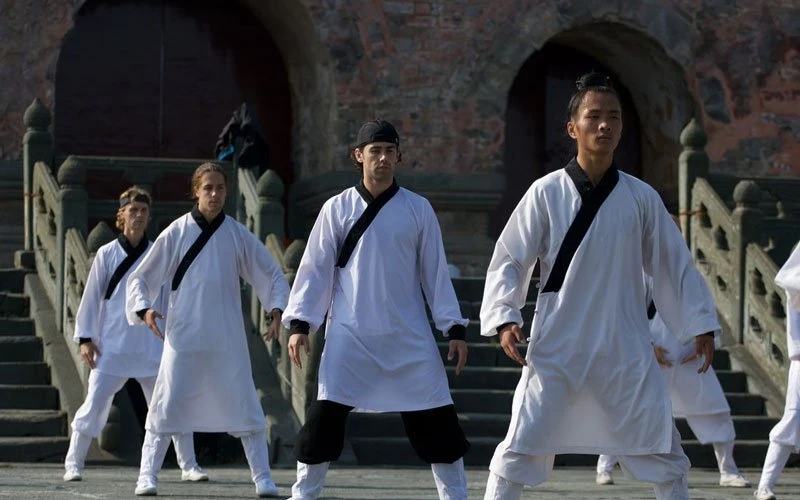
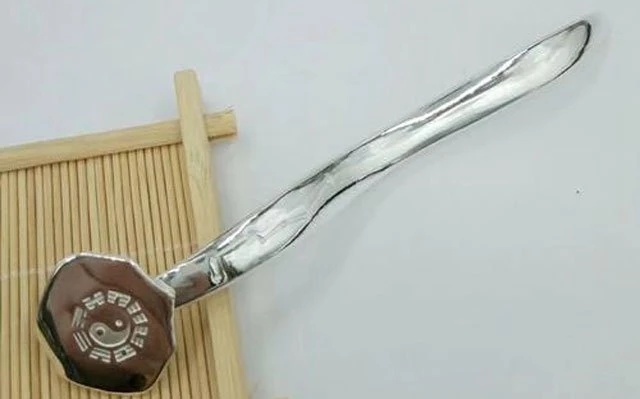

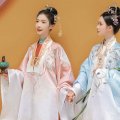

The Yin-Yang Ring, the fidget toys of ancient Taoists!
I'm going to say "leg wrists" from now-
Aksesoris pendeta
Alternatively, you can be a mystic Taoist, using your inner human spiritual powers to help overcome opponents in battle.
No, don’t make up new beliefs for something already long established.